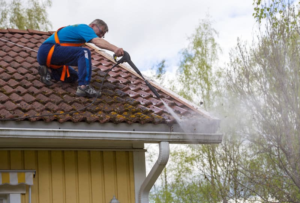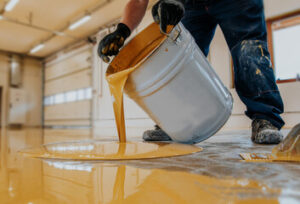Plumbers repair and install pipes, fixtures and other equipment used for water distribution, hot-water production and sewage disposal in homes and businesses. They also inspect and maintain plumbing systems. For professional help, contact Plumbers Sarasota.

Those interested in becoming plumbers must first complete a vocational program or apprenticeship. They must also be licensed. This process involves passing an exam and meeting other requirements set by your state or city.
The plumbing system is complex, and there are many ways that it can go wrong. Even slight problems can become major headaches if they are not fixed promptly. That is why it’s important to have a local emergency plumber on call. Emergency plumbers can respond quickly to your calls and get to work fixing the problem. They can also help you prevent future plumbing emergencies by suggesting preventative maintenance tips.
The first step in a plumbing emergency is to shut off the water supply to the affected area. This will stop any further damage and help you decide whether or not you need a professional to take care of the issue. If you can’t turn off the water, it may be wise to start storing up water in buckets or other containers. This way, you’ll have enough to last until the emergency plumber arrives.
Some leaks are obvious, such as a dripping faucet or a pool of water under a sink. Others are more difficult to identify, such as hidden leaks in the walls or under the floor. If you suspect that you have a hidden leak, it’s a good idea to contact a local emergency plumber as soon as possible. The plumber will be able to use advanced tools and technology to locate the source of the leak and make the necessary repairs.
A clogged toilet or drain is another common plumbing emergency that requires immediate attention. In some cases, you can clear the clog with a plunger or other household items. However, if the clog persists or is caused by a more serious issue, such as tree roots infiltrating the sewer line, it will require the expertise of a professional.
When choosing an emergency plumber, it’s important to shop around for the best price and service. Ask potential plumbers for references from previous customers and check online reviews. These reviews can help you determine which plumbers are reputable and have the experience needed to tackle your specific issue. It’s also a good idea to choose a plumber with upfront pricing, so you know how much the repair will cost before they begin working.
Clogged Drains
Clogged drains are one of the most common reasons to call a plumber. They happen when soap scum, hair, grease and other waste sticks to the walls of pipes and gradually builds up until it becomes too much for the pipe to handle. Clogs usually start in the toilet, but can also appear in sinks, tubs and showers. When these clogs go untreated, it can lead to water and even raw sewage backing up into the home.
Fortunately, there are several ways to fix a clogged drain without calling the plumber. The first step is to check the drain stopper to make sure it’s clear of blockage. If it is, try plunging the drain with a quick, vigorous motion. For best results, use a plunger with a flat cup rather than a flange.
If this doesn’t work, you can try using a drain snake or auger to break up and remove the clog. Both of these devices can be found at any hardware store and are available in handheld or drill-attachable options. If you choose to use a drill-attached drain snake, be sure to use the proper safety precautions as the tool is very sharp. If these tools are unsuccessful, shut off the water to the house and call a plumber.
Another option is to use a chemical drain cleaner. However, this is typically a last resort as it’s very damaging to your pipes. It’s important to read the label carefully and follow the directions exactly as written. If you’re comfortable with using chemicals, a professional will be able to help you locate and remove the clog safely.
The most effective way to prevent clogs is to never put anything down your drain that doesn’t belong there. This includes food scraps, coffee grounds, eggshells and other household waste. Having a garbage disposal in the kitchen can help reduce the amount of food waste that ends up in the pipes, but be sure to run it often and clean the drain trap. You can also minimize the risk of clogs by keeping a strainer over your drains to catch any unwanted debris.
Broken Pipes
A sudden pipe leak can be devastating. It can ruin your floors and walls and lead to expensive water damage if not addressed quickly. Even a small leak can be an emergency situation, especially if it’s located behind your walls or in the ceiling where there could be significant mold and rot. A plumber will be able to diagnose the problem and recommend a course of action for repair and remediation.
If you notice a sudden drop in water pressure, puddles under sinks or a higher than usual water bill, these can be warning signs that your pipes are about to burst. Also, listen for clanking and clunking sounds coming from your walls or ceiling; this can indicate that the pipes are loose and bumping into one another, which can cause them to burst.
Once you’ve noticed a break in a pipe, there are some steps you should take before calling a plumber. Turning off the water supply at the main valve can help to minimise the amount of damage done until a plumber can arrive. You can also try to relieve water pressure by opening up faucets in your home that are closest to the broken pipe. This will help reduce the amount of water rushing into your house and reduce the pressure on the remaining pipe.
Depending on the size and severity of the broken pipe, you may be able to fix it yourself with some basic tools. If the break isn’t too severe, you can turn off the water at the main valve and then use buckets or towels to catch the leaking water. It’s a good idea to keep these supplies nearby in case of an emergency.
You can also prevent your pipes from bursting by having them regularly inspected by a plumber. They can ensure that they are properly insulated and can withstand the cold weather. If you have old or faulty pipes, they can be replaced with new ones to help protect your home from future damage. It’s also a good idea to double-check that your home is well-insulated, especially in the attic and basement.
Sewer Backup
Sewer backups are messy, dangerous, and expensive to clean up. They can also pose a health risk as they are full of harmful bacteria and viruses. Fortunately, there are steps you can take to reduce the chances of a sewer backup and mitigate damage when one does occur.
Your home’s main sewer line is responsible for carrying waste and wastewater to your septic tank or public city connection. A clog in this line can cause wastewater to back up into your home, leading to toilets and drains that won’t flush or don’t work properly. There are several causes of a clogged sewer line, some of which you can control and others that you can’t.
A toilet that won’t flush or is backed up with water and sewage is the most obvious sign of a major sewer problem. However, you should also watch out for other signs of a sewer backup, such as gurgling noises from sink and tub drains, or standing water on your property.
While it is common to have a single drain or toilet clogged with hair, grease, or soap scum, multiple clogged drains are usually an indication that there is a blockage in your main sewer line. You should also take note of whether or not floor drains in your basement are draining slower than usual.
Some causes of a clogged sewer line are out of your control, such as heavy rains or floods that can overload the municipal sewer system. However, there are things you can do to lower your risk of a clogged sewer line, such as properly disposing of cooking oil and using drain cleaners that are safe for your pipes.
A clogged sewer line can be scary and disruptive, but it is important to stay calm and call a plumber right away. A professional can use high-powered equipment to clear even the most stubborn clogs and restore your plumbing to normal. In the meantime, make sure to turn off your home’s water supply valve and keep everyone away from the affected areas until the plumber arrives. Additionally, you should contact your insurance company as soon as possible to find out what is covered under your policy.




